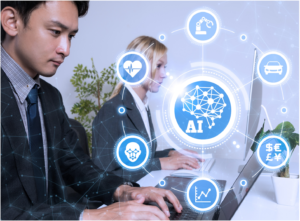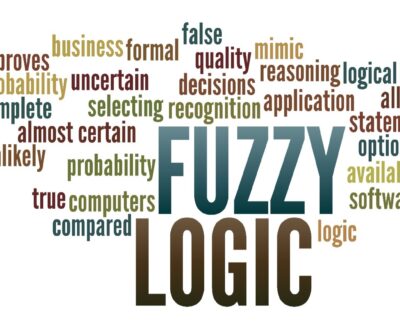
AI has become a utility applied in many variations in most aspects of today’s market. Retail business is one of the basic units of the overall business model. The chance to leverage the power of AI & ML can reshape the scenario. AI, ML, and deep learning are the primary key for generating the insights which will convert the data into insights for better navigation of business. In retail, AI can utilize behavioral analytics and customer intelligence to have better insights regarding the overall market demographics and suggest improvements in the customer service sector of business. The use of AI in the retail market is expected to boom from USD 993.6 Million (2017) to USD 5,034.0 Million by (2022), with a Compound Annual Growth Rate (CAGR) of 38.3%. Various influences like the growing necessity for surveillance and monitoring at a physical store, growing awareness, and application of AI, enhanced user experience, improved productivity, Return on Investment (RoI), maintaining inventory accuracy, and supply chain optimization are driving the global market. The online retail business model encompasses buying and selling FMCG, CPG, clothing, electronics and electrical products, and other essentials. We can exclude entertainment like OTT platforms and travel services like plans and tour packages offered online. Contrasting to the offline stores where buyers do not need to stand in long lineups to get their required products. They can buy them easily through mobile applications and websites, sitting comfortably in their homes or offices. Online retailers majorly adopt AI-based solutions to target customers who want to shop from their homes’ comfort.
AI can be used for creating the forecasting for market demand. AI business intelligence tools available in the market can forecast shifts in the industry, effective changes in marketing, merchandising, and business strategies. Another aspect of the retail business model is customer support. AI-driven chatbots have transformed the customer support area. Chatbots can be an effective solution to communicate with consumers. They can answer frequently asked questions, recommend new items, address complaints and collect valuable customer data before diverting the call to a real-time executive if needed. A posing problem worldwide for retailers is inefficient inventory planning, and they lose a chunk of money every year due to it. AI-driven logistics management can forecast demands for products by scrutinizing historical sales, location, buying trends, and so forth., and streamline the whole process. The AI-enabled drone can be used for warehouse management which can monitor and update the database. All aspects of the retail supply chain, inventory, distribution, staffing, and delivery, can be maintained in real-time. AI tools can offer to customize the shopping experience. It can provide a personalized experience to the customers and monitor their likes and dislikes; it can also look into the customers’ social media impressions and buying trends. It can also help in converting potential customers and site visitors into customers.
Some of the examples we can look at Amazon’s Amazon Go and Just Walk Out shopping technology, which is very responsive. It responses each time a customer picks up a product for the store self. AI & ML can increase an individual’s basket using a self-learning algorithm from the user’s online behavior. AI can also trigger social media messaging and email approaches, which helps convert viewers and visitors into customers. AI also can generate predictive reports to forecast future sales trajectories. Big data can also help activities and strategies throughout the business.
Another way AI can help is that it can discover patterns if provided sales data. They are provided with actual data we can get a product layout. It can actively suggest which products will go together and suggest to buyers what they might need, and it can also act as a call for action. Visual search engines use artificial neural networks (ANN) computing systems with design architecture designed as human brain behavior. Artificial neural networks (ANN) are comprised of various interlinked processing units called neurons. Image recognition tasks neural networks are one of the works that ANN can perform aptly. ANNs can analyze images or similar items uploaded by new users, and they can create descriptions of images (tags), for example, type of apparel, type of cloth, shades of colors. Image descriptions contrast with a list of stored items in a database together with their tags according to their correspondence. Search results are then ranked and presented accordingly to their similarity score. Customers are developing a new habit of searching for products online through virtual assistants like Amazon Alexa, Google Assistant, or Apple’s Siri. The smart speaker market has grown significantly, from 21.5 percent of US consumers in 2017 to nearly 41 percent in 2018. Voicebot.AI provides slightly more significant adoption numbers discovering that the percent of US adult intelligent speaker users grew from 47.3 million to 66.4 million during 2018. Voice-enabled shopping is the least frequent use case for smart speakers, accounting for 15 percent of monthly active users in 2018.
However, the number of people who use these devices for shopping every month grew from 13.6 percent during last year. Customers find the helpful technology: 61.7 percent of millennials aged 18-20 and 62.2 percent of older millennials (21-43) said they want the visual search to be a part of their shopping experience, according to the study ViSenze visual-search-tolls provider conducted in 2018. AI-enabled dynamic pricing is also an approach for changing product prices based on supply and demand. With access to the correct data, today’s AI tools can predict when and what to discount, dynamically calculating the minimum discount necessary for the sale. Smart logistics or intelligent logistics is all about using real-time information through sensors, RFID tags, and the like for inventory management and better forecast demand. Machine learning systems become more intelligent over time to build better predictions for their supply chain and logistics functions. Retailers making AI programs should keep in mind that fundamental economic requirements are still the same. AI strategy must be designed initially with user needs in mind. Also, changing the tech is better than changing the way people usually work. To achieve success, we must remember that changing behavior takes time. However, for companies that get AI right, there is the potential for a brighter future.
About us and this blog
We are a digital marketing company with a focus on helping our customers achieve great results across several key areas.
Request a free quote
We offer professional SEO services that help websites increase their organic search score drastically in order to compete for the highest rankings even when it comes to highly competitive keywords.
Subscribe to our newsletter!
More from our blog
See all postsRecent Posts
- Fuzzy Logic in Data Mining 4th October 2021
- Cryptocurrency Mining – A Basic Idea 9th September 2021
- AI Utilization in Retail Business Model 2nd September 2021





